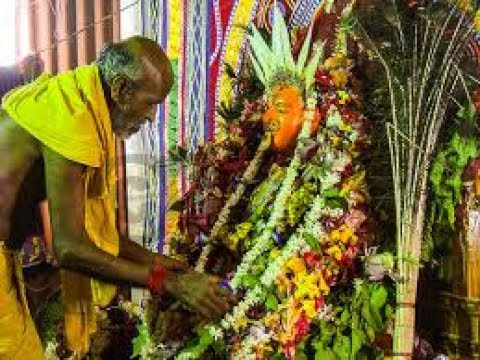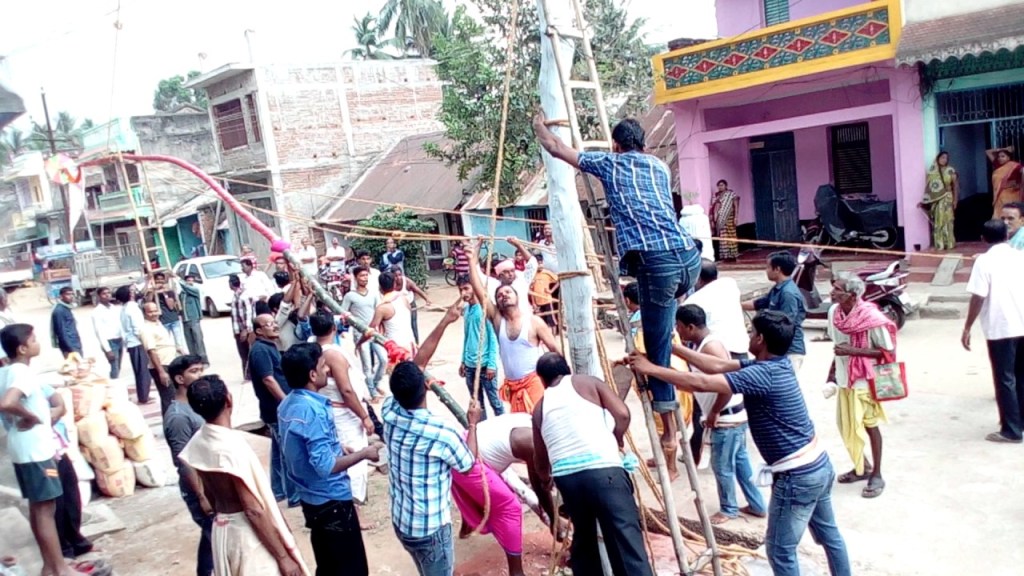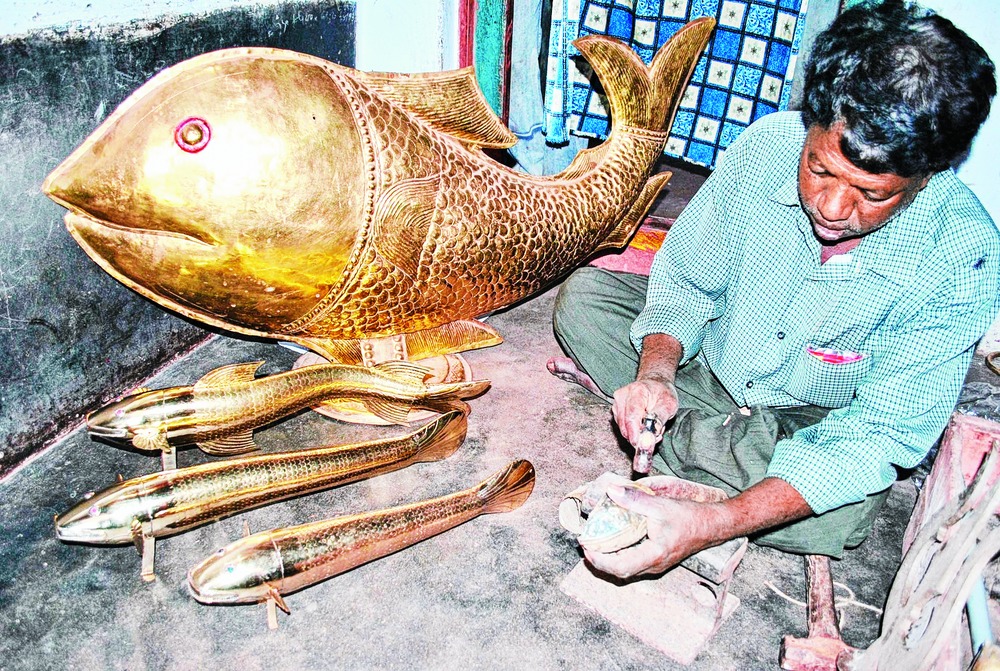Because ‘Bombay’ starts with the alphabet B and most of the Hindi movies borrowed their style and substance from Hollywood, I think the naming of Hindi Film Industry as Bollywood was perfectly logical. The yellow journalists used to call Bombay the B-town, while using it with reference to the glitterati that inhabited the city. By the time Bombay became Mumbai, the Malayalis had already named their film industry as Mollywood, even though unlike Bombay, Malayalam is the name of a language. Following the logic of the Malayalis, Hollywood could have been renamed as Eollywood and Hindi film Industry as Hollywood, but …
Well, enough of the filmy logic. Coming to my B-town connections, it is like this. After spending my early childhood in my native village (about this a special post is coming up in this series), the places where I stayed for at least a couple of years are like this in chronological order: Bellaguntha, Bhanjanagar, Berhampur, Belgaum, Bangalore. After shifting through some non-B towns and cities I came back to Bangalore. Of course by that time it had become Bengaluru, thankfully not losing its B in the process.
This post is about Bellaguntha, the first and the smallest of the B-towns I have mentioned. I have already mentioned about Bellaguntha in my previous post. Brass Fish is not the only thing Bellaguntha is famous for.
When we first came to Bellaguntha we used to stay in a rented house in Koli Street. It is a street of traditional weaver community known as Kolis. I don’t know how many of them are carrying out their family traditions these days. Back in those days if you walked on this lengthiest street of the town during waking hours, the thak-thak rhythmic sound of handlooms would greet you everywhere. Both our neighbours had these machines. I had never seen such a machine earlier and I would go to one of those houses and sit there transfixed watching the mouse like shuttle kicked alternately from left and right through a maze of threads.
In many parts of Odisha Thakurani Jatra is conducted regularly during summer, somewhere annually, somewhere biannually and somewhere triennially. In Bellaguntha it is a biannual affair. Thakurani or Shakti, the female manifestation of divinity in her local avatar takes on a different name for each village or town. It is the protective divinity of the locality. The protective thakurani of Bellguntha is known as Brahmani Devi. The temple of the deity is usually outside the town. But during this summer festival, the deity is brought inside the town and kept in a temporary structure.
Our house in Koli Sahi was right in front of this temporary structure. So sitting at home we could be part of the entire duration of the Jatra. For the initial one or two weeks activities would not be much. Of course there would be the daily puja rituals of the Devi and people would come for darshan and blessings. Then the festivities would slowly pick up. Each street or group would come out with tableaus and processions on spiritual or socially relevant issues. The last couple of the days would witness the whole town turning into an open theater for various forms of folk arts, drama and other forms of performing arts. The festivities would culminate with a grand and emotional farewell to the deity.
It is worth noting that the priests of such presiding deities are not Brahmins. In Bellaguntha they come from the native Koli community. These priests command respect from people of all castes and social status.
Such religious occasions are never used to preach what to do and what not to do. These are occasions to celebrate life with an underlying emphasis on the sacredness of life. These are occasions for all types of local artists – dancers, singers, musicians, actors, painters, decorators etc. – to showcase and utilise their talents.
Akin to the Big Street (Bada Danda) of Puri, though in a smaller scale, Bellaguntha has its own version of Bada Danda, which is known as the Pentha Sahi. The Jagannath Temple, located at the western end of the Big Street, has the idol of only Lord Jagannath. Inside the Jagannath temple complex there is a temple for Sun God with his elaborate chariot. There is another temple dedicated to Lord Rama. Nearby this temple complex, there is huge temple dedicated to Lord Narasimha.
Towards the east end of the Pentha Sahi there is a Shiva Temple from where Baratis usually start their procession. Mine was no exception.
Bellaguntha is not a town that would make it to the level of even passing mention on a regular basis in the state print and electronic media. However, the following documentary by a TV channel would give you some basic idea about the town, even though you many not understand Odia.
My blog post can be taken as a template for many of the of Ganjam District small towns like Sheragada, Surada, Badagada, Kullada, Jagannatha prasada, Kabi Suryanagara, Hinjlicut, Digapahandi. If you have lived in any of such places you know what it is like to live in Bellaguntha.
Of course skills like making of flexible brass fish and the people with whom you have made connection will always remain the exceptions. Other specialties of Bellaguntha are its weekly vegetable and cattle market held every Monday, the sweet medabeda, and a set of ponds on the outskirts collectively known as Sagara.
PS : This is the second post of my April A to Z challenge 2020. My theme this year is Mera Gaon Mera Desh where in I will be exploring many aspects of my country and the places I have been closely associated with. All posts of the AtoZChallenge can be accessed here.



This was an exciting journey through the labyrinths and galis of Bellaguntha in all its colorful gaiety and splendour. I have visited some parts of Odisha like Bhubhaneshwar, Pipli , chilka etc and I find that these parts of India have a celebration that rises beyond religion, it is one which showcases the art, culture and tradition of the different communities and that is undoubtedly the greatness of these alluring places. Looking forward to the next B in this series….
LikeLiked by 1 person
Happy that you loved the post. Thanks for stopping by.
LikeLike
You bring a lot of delicious information to the Bloggywood, my friend. Thanks for carrying us to the heart of Orissa. I thoroughly approve of the template your post presents; what about you going ahead with this theme also?
LikeLiked by 1 person
You mean B series? Let me see.
LikeLike
Getting to know India’s villages better is wonderful.
LikeLiked by 1 person
Definitely. Thanks.
LikeLike
Lovely theme sir. I enjoyed reading about the weavers and the biannual festival that celebrates life!
LikeLiked by 1 person
Happy that you loved it. Thank you.
LikeLike
Please call I want to buy brass fish
9886094913
Whatsup
Thanks
LikeLike
And the start to this post mocking all the “”woods was so much fun
LikeLiked by 1 person
Nice to know about this place… Have never been there but have heard of it and seen the Brass Fish… But the Devi Puja is it done somewhere else also.. I have a feeling I have seen the puja
LikeLiked by 1 person
This type of puja happens in many places in Odisha.
Thanks for stopping by.
LikeLike
Nice take on B-town. I love everything about Belgaum except its water which makes my tummy upset. I love alepak which is dish you will get only in Belgaum
LikeLiked by 1 person
Traveling India with such fabulous narration is a lovely affair. I like that Golden fish for sure, what a coincidence – the Koli in Mumbai are aboriginal fishing tribe. They are also weavers but weave only the fishing nets.
LikeLiked by 1 person
You would find many such coincidences reasons and chronologies of which can be known only after historical research. But such coincidences point to frequents interactions of various cultures since ancient times.
Thank you so much for stopping by.
LikeLike
So nice that you have shared about Bellaguntha. Great that you stayed there!
Hope the weaving community is still active now. Didn’t know about them as the town is famous for the brass items.
I was supposed to visit. Hope this covid19 gets over soon & I can go.
LikeLiked by 1 person
I think some of them are still active. They weave simple clothing matetial of day to day use like dhoti, gamchha and the occasional sari.
Hope you enjoy your visit to Bellaguntha. In case you need any information or assistance, i will provide you some references.
LikeLike